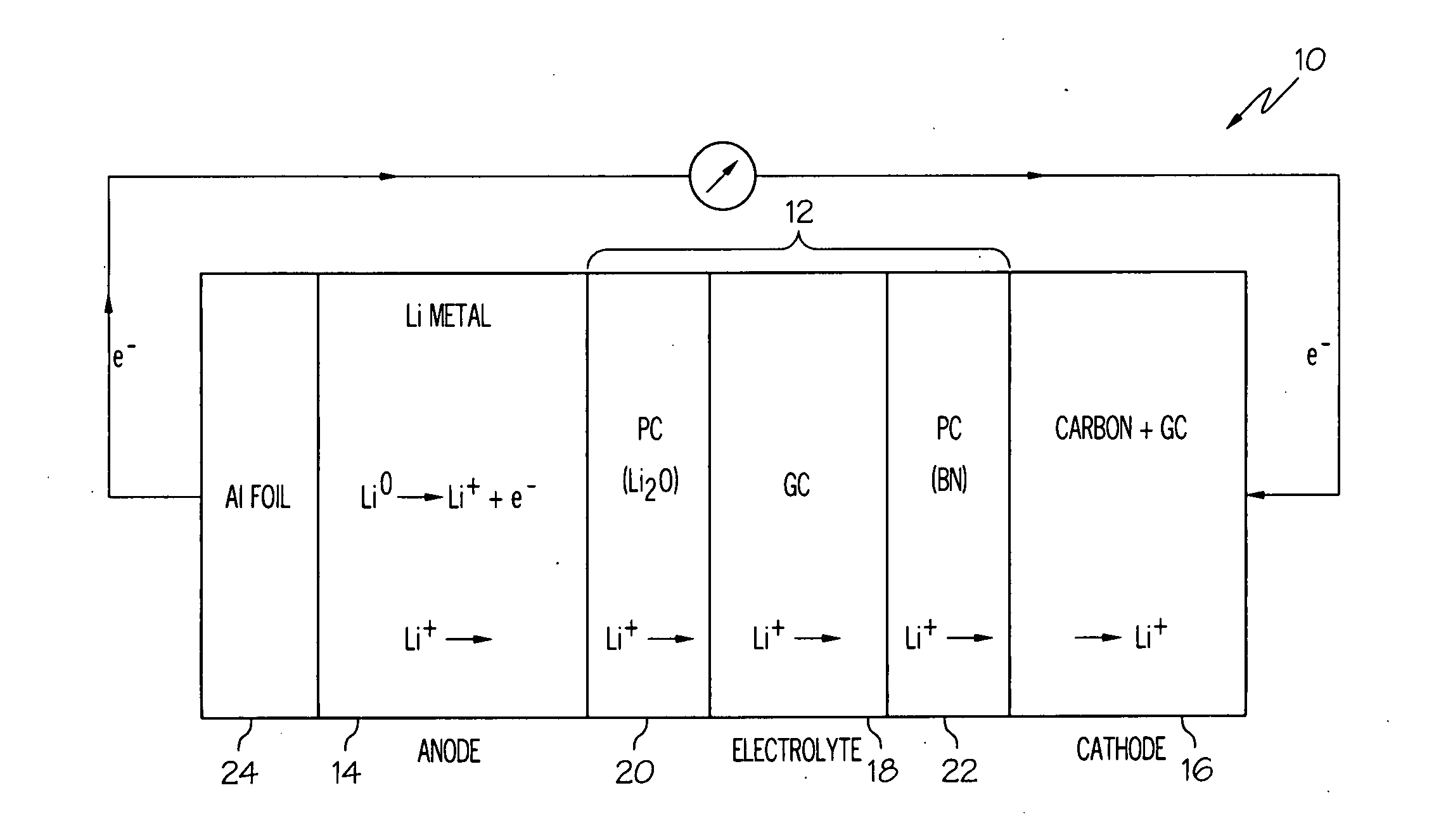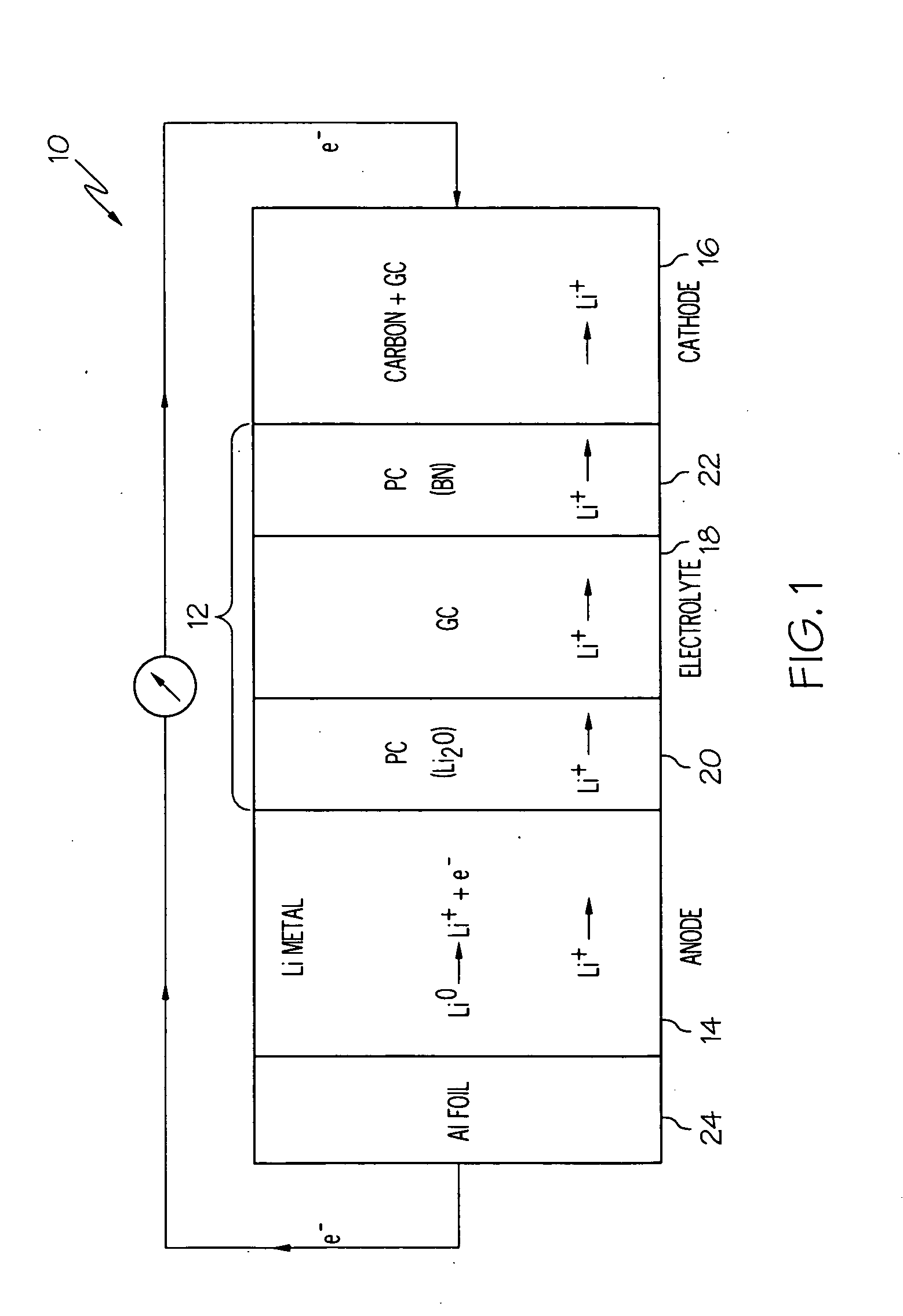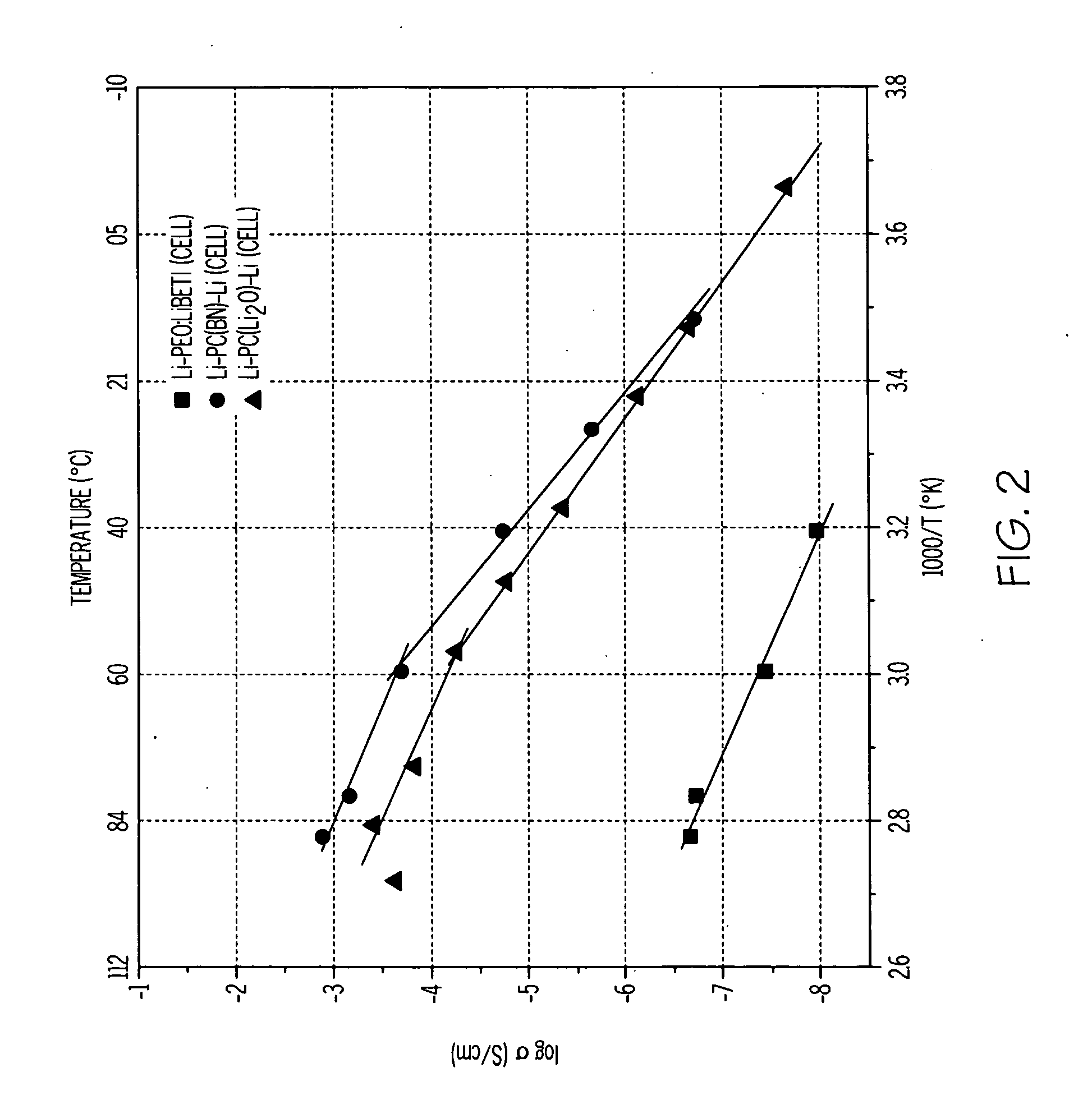Lithium-air cells incorporating solid electrolytes having enhanced ionic transport and catalytic activity
a technology of solid electrolytes and lithium-air batteries, applied in the field of liquid-free lithium-air cells, can solve the problems of liquid electrolyte-based lithium batteries, solid electrolytes, explosions, etc., and achieve the effects of increasing conductivity, enhancing ionic transport, and increasing conductivity
- Summary
- Abstract
- Description
- Claims
- Application Information
AI Technical Summary
Benefits of technology
Problems solved by technology
Method used
Image
Examples
example 1
[0043]Polymer-ceramic composite formulations were prepared with and without dielectric additives (BN and Li2O). First, a solid polymer-ceramic electrolyte was formed by providing poly(ethylene)oxide (PEO) (molecular weight 2,000,000 from Union Carbide) and LiN(SO2CF2CF3)2 (LiBETI from 3M). The PEO and LiBETI were dried in an oven at 50° C. and 60° C., respectively, for 48 hours. The PEO:LiBETI (8.5:1) electrolyte was prepared by a solvent-free energy milling technique. The chemicals were weighed inside a glove box maintained at 2 and 2O. The batch was contained in an airtight metallic jar and subsequently mixed using an energy mill (Spex Certi Pep 8000D mixer / mill) for 1 hour without a stainless steel ball. Following the milling, 300 mg of the milled material was loaded into a preheated die (about 100° C.) and then pressed with 5 ton / cm2 pressure into a disc.
[0044]Composites of PEO:LiBETI including dielectric additives (BN and Li2O) were then prepared using a similar procedure ((PEO...
example 2
[0049]Ionically conducting glass-ceramic specimens based on lithium-aluminum-germanium-phosphate were prepared with varying concentrations of lithium oxide as a dielectric phase to create a space charge effect on ionic transport.
[0050]A 40 gram batch of 19.75Li20.6.17Al2O3.37.04GeO2.37.04P2O5 (mol %) (LAGP) composition was prepared using reagent grade chemicals Li2CO3 (Alfa Aesar), Al2O3 (Aldrich, particle size 2 (Alfa Aesar) and NH4H2PO4 (Acros Organics). The chemicals were weighed, mixed and ground for 10 minutes with an agate mortar and pestle. For further homogenization, the batch was milled in a glass jar for one hour using a roller mill. The milled batch was contained in a platinum crucible and transferred to an electric furnace. Initially, the furnace was heated to 350° C. at the rate of 1° C. / minute after which the glass was melted for 2 hours. A clear, homogeneous, viscous melt was poured onto a stainless steel plate at room temperature and pressed by another stainless stee...
example 3
[0057]A lithium-air cell incorporating a solid electrolyte in the form of a laminate was constructed as follows. Two polymer-ceramic membranes were prepared from dried poly(ethylene) oxide, LiBETI salt, and dielectric additives Li2O and BN, respectively as described above in Example 1. The dried mixture of the electrolyte components were energy milled and hot pressed to obtain 200 to 400 μm thick membranes.
[0058]A glass-ceramic membrane was prepared from a batch of various oxides corresponding to the 18.5Li2O.6.07Al2O3.37.05GeO2.37.05P2O5 molar composition as described in Example 2. The batch was melted at 1350° C. in a platinum crucible and then cast onto a steel plate, such that the glass solidified. The solidified glass was then powdered and pressed into a membrane, followed by sintering from about 800 to about 850° C. for about 8 to 24 hours. The glass-ceramic membrane was then laminated between the two polymer-ceramic membranes.
[0059]A lithium anode was obtained from Lithium Co...
PUM
| Property | Measurement | Unit |
|---|---|---|
| Temperature | aaaaa | aaaaa |
| Thickness | aaaaa | aaaaa |
| Electric potential / voltage | aaaaa | aaaaa |
Abstract
Description
Claims
Application Information
 Login to View More
Login to View More - R&D
- Intellectual Property
- Life Sciences
- Materials
- Tech Scout
- Unparalleled Data Quality
- Higher Quality Content
- 60% Fewer Hallucinations
Browse by: Latest US Patents, China's latest patents, Technical Efficacy Thesaurus, Application Domain, Technology Topic, Popular Technical Reports.
© 2025 PatSnap. All rights reserved.Legal|Privacy policy|Modern Slavery Act Transparency Statement|Sitemap|About US| Contact US: help@patsnap.com



